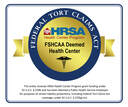
Health care in America is at a pivotal point in history. The medical community has come to a fork in the road in which those charged with providing health care services can choose to continue to provide status quo care or they can completely overhaul the system. For the sake of our communities and those who seek medical care, the delivery and value of health care must be corrected and vastly improved.
Current forms of health care delivery are based on response performance. Diagnosing and addressing care on the surface — (A) is the symptom so (B) is the treatment. The problem with this type of care is that while it may present immediate results, it does little to address the root problem. This can often result in chronic issues, the swapping of symptoms, or leaving the true health issues masked and undetected until it is too late to address a more traumatic health scenario. This type of care holds little value for the patient, the provider and the overall health system.
Not only does the system in place carry low value, it fails to execute the elements of competition that drive normal markets to innovation and improvements in quality, cost and technology. In health care, there are rewards for the number of patients seen, the type of care given or the prescriptions written. This causes a significant rise in cost and creates an environment in which quality is inconsistent. Inadequate physicians are left in the system and patients become unwilling to seek care for the more severe symptoms as a result of being shuffled from one “treatment” to the next without addressing underlying health issues.
This antiquated way of administering care does little more than provide maintenance — effectively increasing the costs of health care, while simultaneously creating few solutions. Cost averages shape diagnosis, treatment and results instead of basing the cost on the value of a full cycle of care and recovery. Treating an obese patient and preventing future health complications costs far less and holds much more value than treating the same patient after he or she has had a heart attack and is still fighting obesity.
To change the way that health care is delivered, the way of thinking about the purpose of health care must first be changed. Rather than offering reactive care, providers should be administering preventative care. In a system where primary-care physicians are used as the customary source of care, there should be a focus on the full cycle of whole-health care rather than the outcome of one intervention, office visit or test. This type of care has been proven to create lower mortality rates, better health and lower medical costs, leading to healthier and more economically stable communities.
The way in which health care is measured must also be reevaluated. When health care is measured by the value of the services, the results of the care will reflect the level of care provided on the basis of actual resources used for care. This way of weighing results puts the focus on the quality of treatment rather than the quantity of patients treated. There is little value in a revolving medical door that rewards those who are lazy in their practice. The value of a medical provider should be measured by the outcomes achieved when treating the whole patient and not a singular symptom.
Community Care of West Virginia has been able to utilize the benefits of a value healthcare system and bring quality health care to the region and improve quality of life for our communities. By connecting every patient to a primary-care provider, the organization ensures that patients are put into the system to receive a full-cycle of personalized care. This enables the provider to consider a multitude of possible factors that have come to attention throughout a patient’s life span. Further, an additional set of parameters — living situation, family history, nutrition, stress levels — can be considered because of the patient-doctor relationship that is developed.
In a rural state, health care is often inhibited by the difficulty of maintaining a full suite of care due to distance, limited resources and lack of availability. To overcome the issues of time, distance, and cost, Community Care has created and implemented a network that allows health professionals to access patient data at all sites, assuring that each patient is given a full range of services at any location. This pooling lowers the cost of delivering high quality care and further increases the value of the care available.
The health care landscape must be improved by moving away from cost-based health care and toward value-based health care. By changing the way that healthcare is delivered to patients, the medical community can offer whole-health care, provide better health outcomes and increase the value of services, all while decreasing the cost of care. Community Care of West Virginia provides one model for the way this can be done. It is the hope of Community Care that others will adopt a similar design to provide complete care. The health of our communities depends on it.
Dr. Sarah Chouinard has served as the Chief Medical Officer for Community Care of West Virginia (CCWV) since 2003. Dr. Chouinard has a degree in neurobiology from the University of Vermont and has conducted scientific research at the University of California. She is a graduate of Marshall University’s School of Medicine and served as chief resident in the family medicine residency program.
https://www.wvnews.com/statejournal/opinion/changing-the-healthcare-landscape/article_905d09dc-e3c5-5b87-8947-ce28328c2de3.html

 RSS Feed
RSS Feed









